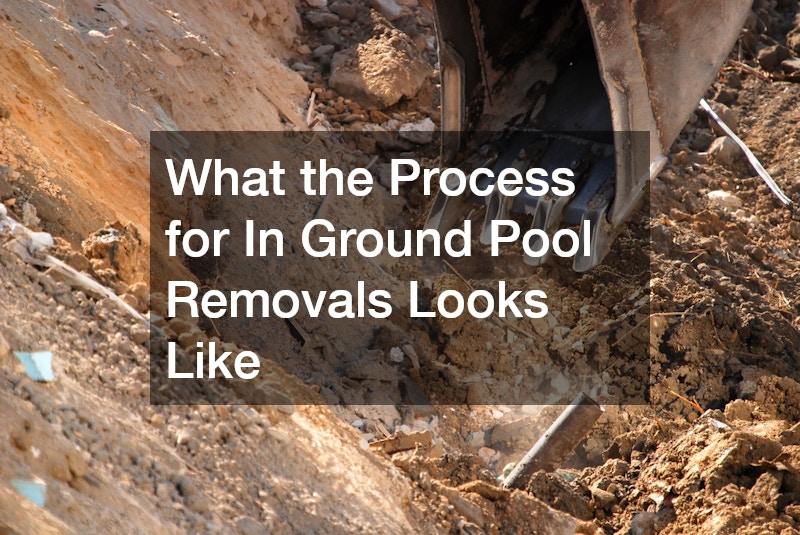An in ground pool removal is an intricate process that requires careful planning and execution. Whether you’re looking to free up space in your backyard, remove an old pool that is no longer in use, or prepare for new construction, understanding the steps involved in the removal process can help you prepare for a smooth experience. In this article, we’ll take you through the typical process for in ground pool removals and highlight key considerations along the way.
The first step in in ground pool removals is the initial consultation. Before any work begins, it’s important to discuss your goals with a professional removal service.
During this stage, a contractor will assess your pool’s condition, design, and location. They will also take into account any local regulations or permits that may be required for the removal process. Understanding these factors early on ensures that the project can proceed smoothly without any surprises. The consultation is a great time to ask questions about the process, timeline, and expected costs.
Once the consultation is complete, the next step is to drain the pool. Draining during in ground pool removals is a critical part of the removal process. All water is removed from the pool to ensure that the structure can be safely dismantled. Pool water is typically pumped out, and proper disposal methods must be followed, especially if the pool water contains chemicals that may harm the environment. A licensed pool removal service will ensure that the draining process adheres to environmental regulations and avoids any issues.
After draining, the pool’s structural components are removed. This includes the pool’s liner (if applicable), tiles, and any equipment such as pumps and heaters. The removal of these components is an essential step in preparing the pool for demolition. In some cases, depending on the type of pool (concrete, fiberglass, or vinyl-lined), the pool may need to be broken up using specialized equipment. Concrete pools, for example, require heavy machinery to break up the structure into smaller pieces that can be hauled away. This process can take a significant amount of time and requires careful planning to avoid damage to surrounding landscaping.
Once the pool’s components have been removed, the next step in in ground pool removals is to fill the hole left by the pool. After the demolition of the pool shell, the large void in the ground needs to be filled. Typically, this involves using a combination of sand, gravel, and dirt to fill the space. This helps ensure that the area is stable and compacted. The fill material is usually added in layers, with each layer being compacted to avoid future settling. The goal is to create a solid foundation for the land above the former pool area.
Following the filling of the hole, the next step is to grade the area to match the surrounding landscape. Once the hole is filled, the area may not be level with the rest of your yard. The grading process involves leveling the surface to ensure that water drains properly and that the ground is smooth and even. This is an important step to ensure that no future drainage issues occur and that your backyard looks seamless once the removal is complete. Grading also prepares the area for any new landscaping or construction projects you may wish to undertake.
After grading, the area is ready for final landscaping. Once the pool is removed and the site is graded, you can work with your contractor to landscape the area. Depending on your preferences, this might involve adding sod, planting new trees or shrubs, or creating a garden space. Many homeowners use the area for outdoor entertainment, such as installing a patio, fire pit, or new garden beds.
Permitting and inspection are also critical parts of in ground pool removals. In many areas, pool removal requires a permit, and inspections may be necessary to ensure that the removal complies with local regulations. Your contractor will usually handle the permitting process and ensure that everything is up to code. In some cases, a final inspection may be required to confirm that the site is properly filled, graded, and ready for use. The permitting and inspection process helps ensure that the pool removal is done safely and in compliance with local laws.
In conclusion, the process for in ground pool removals involves several important steps, from initial consultation and draining the pool to demolition, filling the hole, and final landscaping.
.
